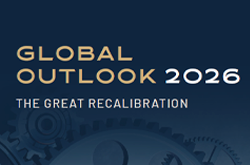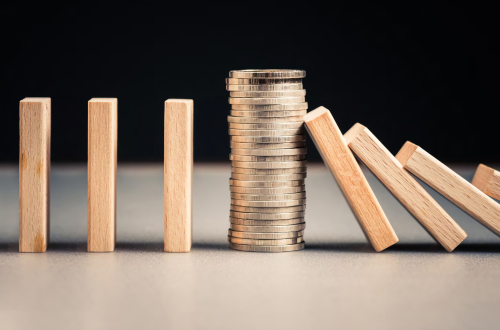Stagflation survival guide
Monthly House View - October 2022 - Download here
How much, how far and for how long? In addition to end-point of the Fed’s and European Central Bank’s (ECB) rate-hike cycle, investors also have questions about the duration of this tightening. How long will central banks have to keep rates high in order to bring inflation back down to its target?
Until now, investor hopes had consisted of thinking that the Fed would reverse its monetary policy fairly quickly after the last rate hike. If the past were prologue, that is what would have happened. In mire recent cycles, the Fed generally kept its rates at a high plateau for 6-12 months before lowering them again. But the fight against inflation in the 1970s points us to a slightly different context. The Bundesbank left rates at a plateau of 7.5% for two years, from mid-1980 to mid-1982. This is also the message sent by the Fed’s dot plots, with rates that are expected to still be close to 4% at the end of 2024.
Should we be prepared for a longer tightening cycle, and will we have to wait longer for investors to return to the equity markets? This cannot be ruled out and is not without real consequences. If rates have to be higher for longer, it stands to reason that companies will have to focus on deleveraging and disinvestment, while leveraged stocks could continue to suffer.
It therefore makes sense for investors to base their allocation decisions a little less on the Fed’s next communication and a little more on a structural investment outlook, at a time of potentially more persistent stagflation. Rather than waiting for a possible pivot by the Fed at the beginning of the year, it might be better to try to build resilient portfolios in a higher-rate and lower-growth environment.
With every regime change, a new leader is crowned. The return-to-shareholder thematic remains the big winner in this regime. Today, the key challenge for companies is to protect their financial equilibrium and their profitability in the face of more uncertain growth outlooks and higher financing costs. Symmetrically, investors should therefore focus on companies with highly resilient profitability and solid balance sheets.
Conversely, the successful safe havens of the recent past cycle are not particularly helpful in this market regime, which could last another 12-24 months. Gold, the major winner of the 1970s, but also of the post-pandemic period, continues to correct in the face of the rise in real rates expected over the next two years. The yen, a favourite go-to for managers to hedge portfolio risk, will be of no help at all as long as the Bank of Japan maintains its current rate policy in contrast to an aggressive Fed. How long will the dollar continue to dominate the world and destabilise other economies? Barring a remake of the 1985 Plaza Accord, probably until the Fed announces the end of its rate-hike cycle.
The good news in this context is that corporate bond yields have returned. Bonds, clearly the most hated asset class in the world this year, could make a real comeback in the next two years. With a 5% yield, 2-3 year investment-grade US corporate bonds are a likely good fall-back choice in this stagflationary environment.
What if expected future inflation were ultimately to return to levels too low to be realistic? Central banks’ stronger tone and recession fears caused inflation expectations to fall in the United States. They are now nearly three times lower than in Germany, where the energy crisis is ramping up projected inflation for the next two years to more than 7%. After several challenging months for US index-linked bonds, these securities could be a hedge worth considering as a way to protect against a stickier inflation scenario.
Monthly House View, 23/09/2022 release - Excerpt of the Editorial
September 30, 2022




